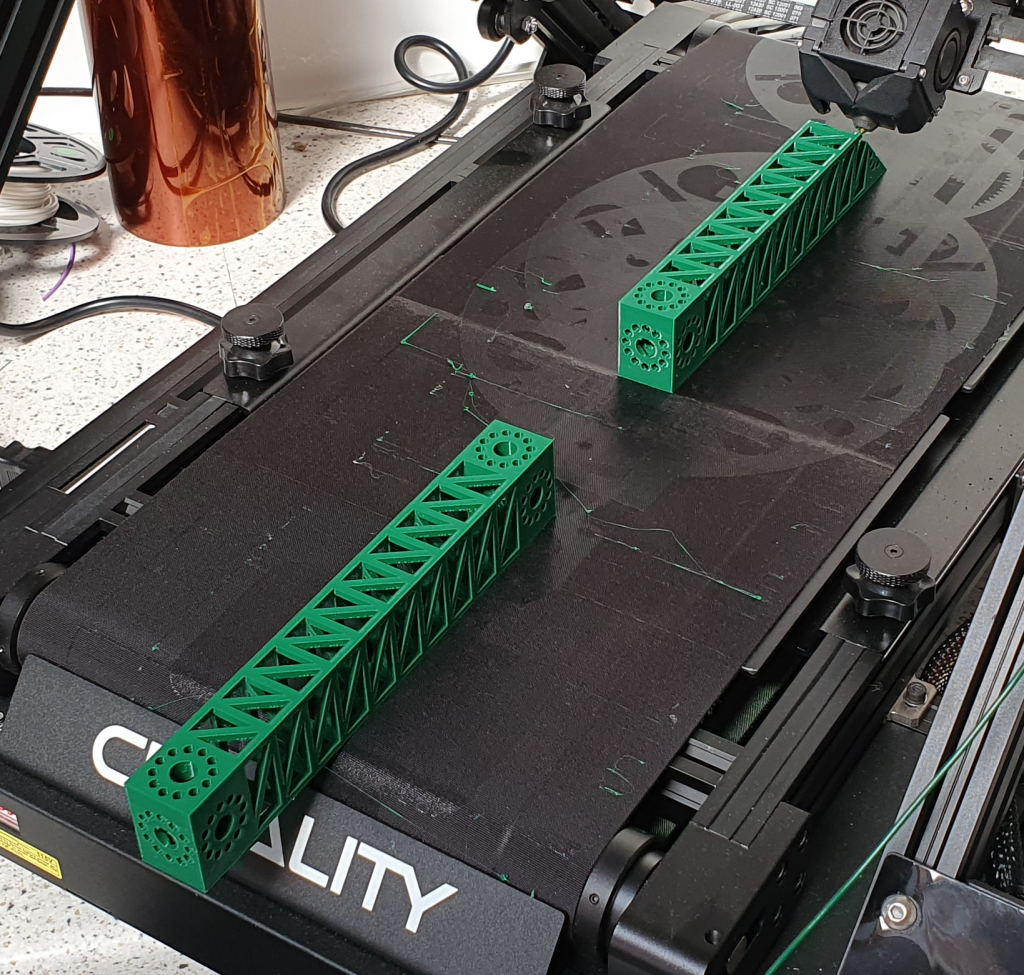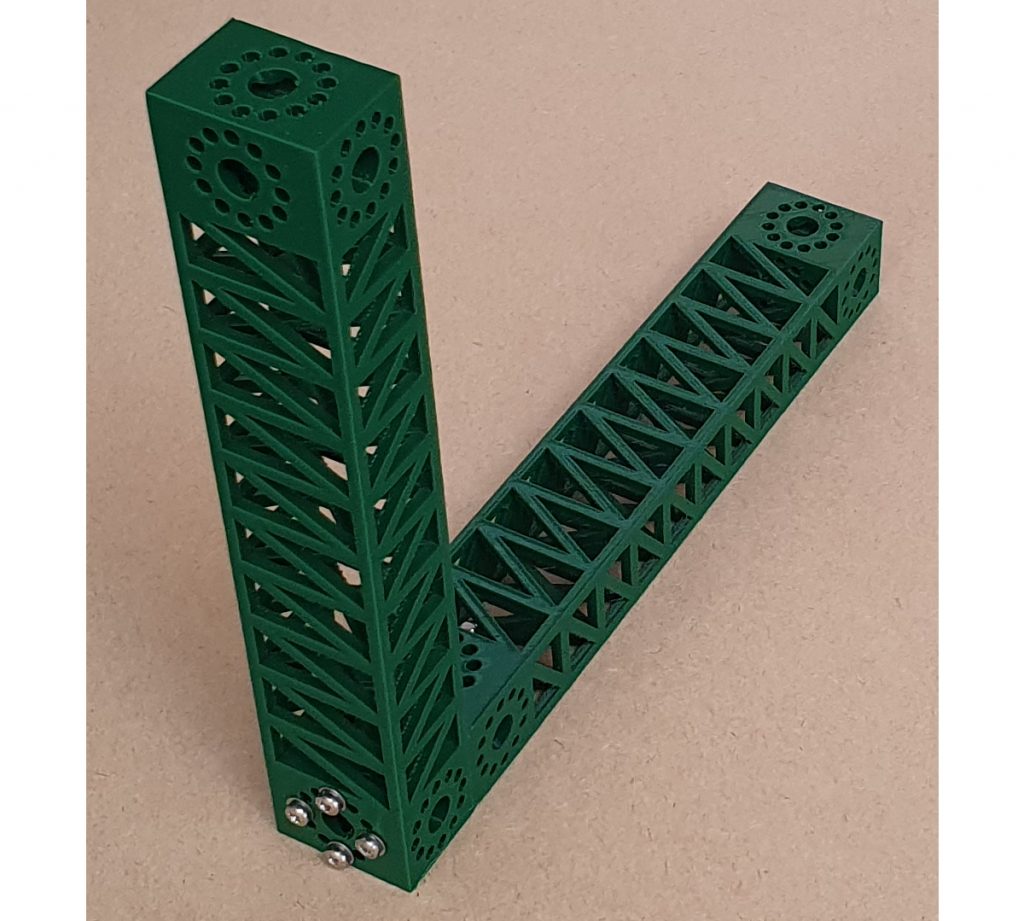The nominations for the 2021 3D Printing Industry Awards are now open. Who do you think should make the shortlists for this year’s show? Have your say now.
RepRap, the developer of self-replicating open-source 3D printers, has created a novel Python script that enables users to 3D print low-cost PLA beams that are as stiff as steel counterparts.
The open-source FreeCAD program is designed to be as accessible as possible, as it only requires users to specify some very basic parameters. This includes the length, width, and height of the beam, as well as the thickness of the struts and the diameter and number of screw holes in the mounting blocks on either end of the beam. The script then automatically generates the entire beam in the form of a 3D printable model.
RepRap has already tested its program with Creality’s infinite Z-belt CR-30 system, which enables the printing of (theoretically) infinite-length beams. The script is also suitable with standard FFF systems but without a conveyor belt, the printed beams will be limited to the length of the build plate.
The company wrote in a blog post, “Lots of people have printed long I-beams on this type of machine, but we thought that we’d write a Python FreeCAD program to generate parametric beams more suitable for 3D printing, taking advantage of the fact that complexity is more or less free with this technology and that infinite-Z belt printers can print many overhanging shapes without support material.”

How does it work?
The software represents the beam structures as repeating blocks of tetrahedrons, which are known to be very strong with most of the material lining the outer faces. This gives the structures a high second-moment of cross-sectional area, providing ample bending resistance in all directions. The diagonal struts are also angled to ensure belt printers with 45° printing angles can fabricate the entire beam without the use of support material.
RepRap’s program also automatically generates mounting blocks at the ends of each beam that allow the beams to be bolted to each other or other objects. The larger holes are to allow wiring, tubing, and parts such as drive shafts to run down the center of the beams while the smaller holes allow for angular increments around the larger holes.

As stiff as steel
Putting the Python script to the test, RepRap 3D printed a set of PLA beams and subjected one of them to a bending test using a simple weight and dial gauge setup. The length of the printed beam was 175mm and it weighed 47.7g. Its stiffness was determined to be 1.02 x 10⁻⁴ mN⁻¹, while its flexural rigidity (Young’s modulus * second moment of area) was calculated as 17.5Nm².
RepRap worked out that a 5mm square steel beam of the same length (175mm) would also weigh around 47g. Although the steel beam would physically be smaller than the printed counterpart, the company had still 3D printed a PLA beam that exhibited the same stiffness as the same weight of steel. Additionally, the use of 3D printing allows for variable beam dimensions, enables services to be integrated into the beam interior, and makes complex patterns of attachments and holes possible with ease.
RepRap’s open-source Python program can be found on Github here.

Design for Additive Manufacturing (DfAM) software is integral when it comes to truly leveraging the design freedom granted by 3D printing. Earlier this year, 3D printer manufacturer Stratasys and engineering software developer nTopology added a new Masking Fixture Module to their FDM Fixture Generator design automation tool. The software is intended to streamline the design process for 3D printed jigs, fixtures, and other tooling.
Elsewhere, researchers from ETH Zurich have previously developed a computational DfAM framework capable of automating the design of complex multi-flow nozzles. The framework acts as an alternative to the conventional CAD software used by engineers today, but allows non-specialist users to design complex geometries specifically for additive manufacturing tooling purposes, such as FDM nozzles.
Subscribe to the 3D Printing Industry newsletter for the latest news in additive manufacturing. You can also stay connected by following us on Twitter, liking us on Facebook, and tuning into the 3D Printing Industry YouTube Channel.
Looking for a career in additive manufacturing? Visit 3D Printing Jobs for a selection of roles in the industry.
Featured image shows two 3D printed PLA beams secured together. Photo via RepRap.



